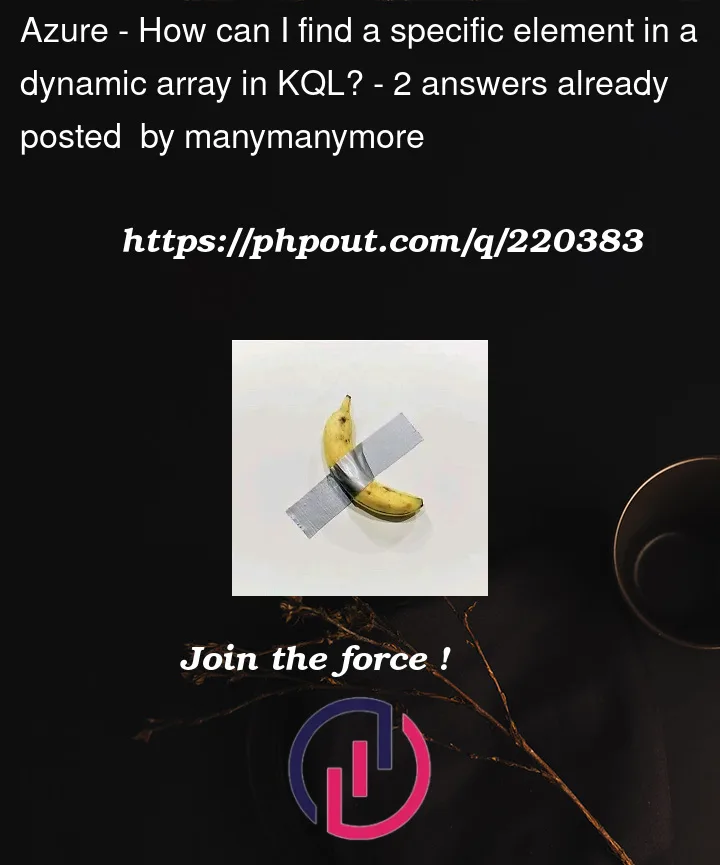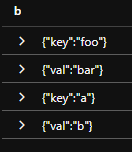How can I find a specific element in a dynamic array in KQL?
E.g. I have the json array (i.e. a string) [{"key": "foo", "val": "bar"}, {"key": "a", "val": "b"}] in KQL. Now I want to find out the value of the property val for the objects with the "a" key. It can be at any index, not only at the index 1 as it is in the example above.
I found the array_index_of function. But it does not seem to accept any predicates, it accepts only the index and I don’t know the index in my case beforehand.
Are there any means to query the JSON array for an item which satisfies some conditions in KQL?
I tried the mv-expand, but it seems to separate the key from the val:
datatable (b: dynamic)
[
dynamic({"key": "foo", "val": "bar"}),
dynamic({"key": "a", "val": "b"})
]
| mv-expand b





2
Answers
In KQL, you can use the mv-expand operator to work with dynamic arrays and then use the mv-apply operator to filter the elements based on a condition. In your case, so to find value of ‘var’ with the key of ‘a’ you would want something in the area of:
mv-apply parsedJson = parse_json(jsonString) on (…) The parse_json function is used to convert the JSON strings in the "jsonString" column into objects. The mv-apply operator is then used to apply this parsing to each row of the datatable, creating new columns "key" and "val" with extracted values.
where key == "a" This filters the rows to keep only those where the "key" is "a"
After executing the query, you’ll get a table containing the values for the objects with the "a" key
Edit:
To get the key and val on the same row, you can use the mv-apply operator with the project statement. This will let you apply a projection to each element of the dynamic array and merge the properties key and val into a single row.
Output for me with my example data is:
I have reproduced in my environment and below are expected results:
You can just use
bag_unpack()and then get the value of a like below:Output:Fiddle.
mv-exapnd divides the dynamic array based on commas "," and new line so it divides like that and this is an expected behavior.